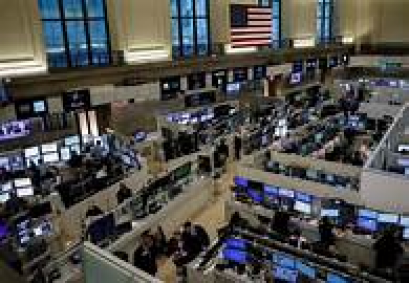TEHRAN, October 27 -The S&P technology index led the way higher, up 2.91 percent. The index notched its best day since March 1, 2016, and is up nearly 35 percent on the year versus the 15 percent gain in the S&P 500.
 TEHRAN, Young Journalists Club (YJC) - The S&P technology index led the way higher, up 2.91 percent. The index notched its best day since March 1, 2016, and is up nearly 35 percent on the year versus the 15 percent gain in the S&P 500.
TEHRAN, Young Journalists Club (YJC) - The S&P technology index led the way higher, up 2.91 percent. The index notched its best day since March 1, 2016, and is up nearly 35 percent on the year versus the 15 percent gain in the S&P 500.
Google-parent Alphabet (GOOGL.O) gained 4.26 percent as its revenue got a boost from advertising sales.
Microsoft (MSFT.O) jumped 6.41 percent after the world’s largest software company reported further gains from its cloud computing services.
Also lifting the sector were shares of Apple (AAPL.O), which rose 3.58 percent after the company allayed concerns of muted demand for its 10th anniversary phone. Intel (INTC.O) soared 7.38 percent after its quarterly results topped estimates and the chipmaker raised its full-year forecasts.
Amazon (AMZN.O), up 13.22 percent, was responsible for the biggest boost to the S&P 500 after reporting a quarterly sales surge. Its gains helped lift the consumer discretionary sector 1.60 percent to its best daily performance since Dec. 7.
“Anyone who is drawing parallels to the tech bubble of 1999 has to at least consider that this rally in those large names is really fueled in large part by earnings, not just hope,” said Jack Ablin, chief investment officer at BMO Private Bank in Chicago.
“They are the ones that everyone wants to own, has to own because they are the ones reporting the best earnings. They definitely came through, that is very positive.”
“There are certainly similarities between the tech bubble and now, but the underpinnings of this rally are still a lot more solid.”
Adding to the positive sentiment was the third-quarter GDP data that showed the U.S. economy unexpectedly maintained a brisk pace of growth, at a 3-percent annual rate, despite a hurricane-led drop in consumer spending and construction activities.
A report about President Donald Trump favoring Federal Reserve Governor Jerome Powell as the head of the U.S. central bank also provided a boost for stocks. In Powell’s potential appointment, investors see a continuation of the current monetary policy.
The Dow Jones Industrial Average .DJI rose 33.33 points, or 0.14 percent, to 23,434.19, the S&P 500 .SPX gained 20.67 points, or 0.81 percent, to 2,581.07 and the Nasdaq Composite .IXIC added 144.49 points, or 2.2 percent, to 6,701.26.
For the week, the Dow rose 0.5 percent, the S&P 500 gained 0.2 percent and the Nasdaq advanced 1.1 percent. The S&P has notched gains for seven straight weeks, its longest weekly winning streak in three years.
Estimated S&P 500 earnings growth for the third quarter is now 6.7 percent, according to Thomson Reuters data. Of the 273 companies that have posted earnings, 74 percent have topped expectations, compared with the 72 percent beat rate over the past four quarters.
Not all earnings were positive, however. Chevron’s (CVX.N) 4.14 percent fall weighed on the S&P and the Dow after the oil company’s profit missed estimates.
Merck (MRK.N) dropped 6.05 percent after the company reported a revenue drop due to a cyber attack and loss of market share for many of its older drugs.
Advancing issues outnumbered declining ones on the NYSE by a 1.62-to-1 ratio; on Nasdaq, a 1.70-to-1 ratio favored advancers.
About 7.43 billion shares changed hands in U.S. exchanges, above the 6.04 billion daily average over the last 20 sessions.
Source:Reuters
Related News
Tags
Your Comment